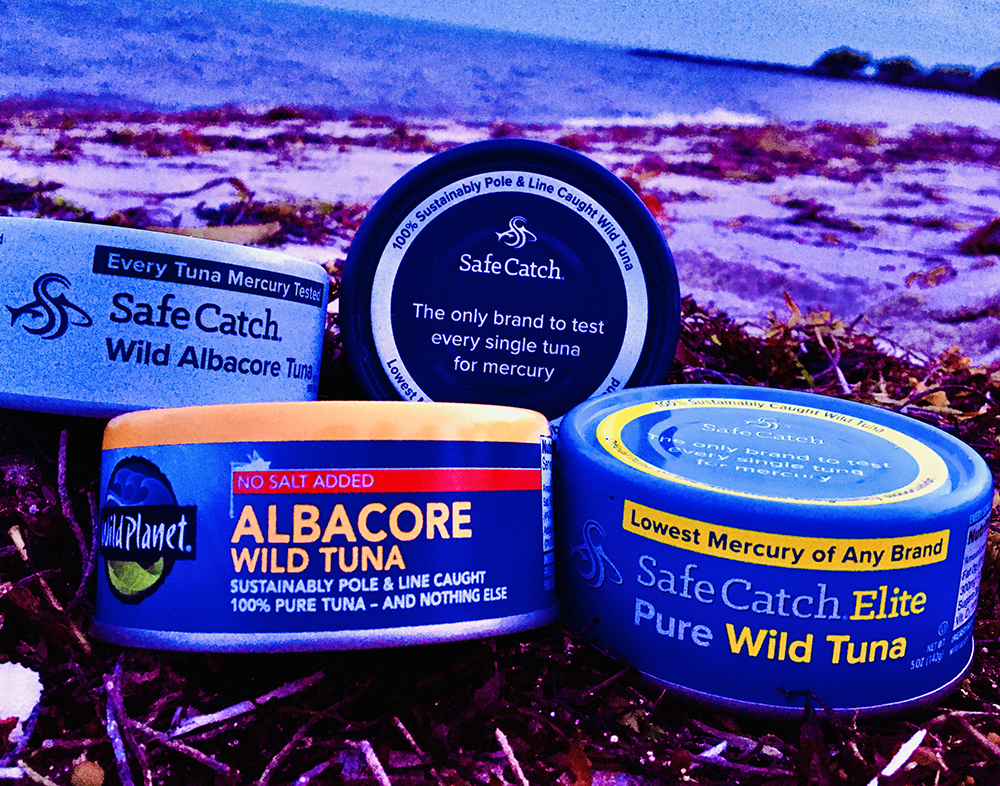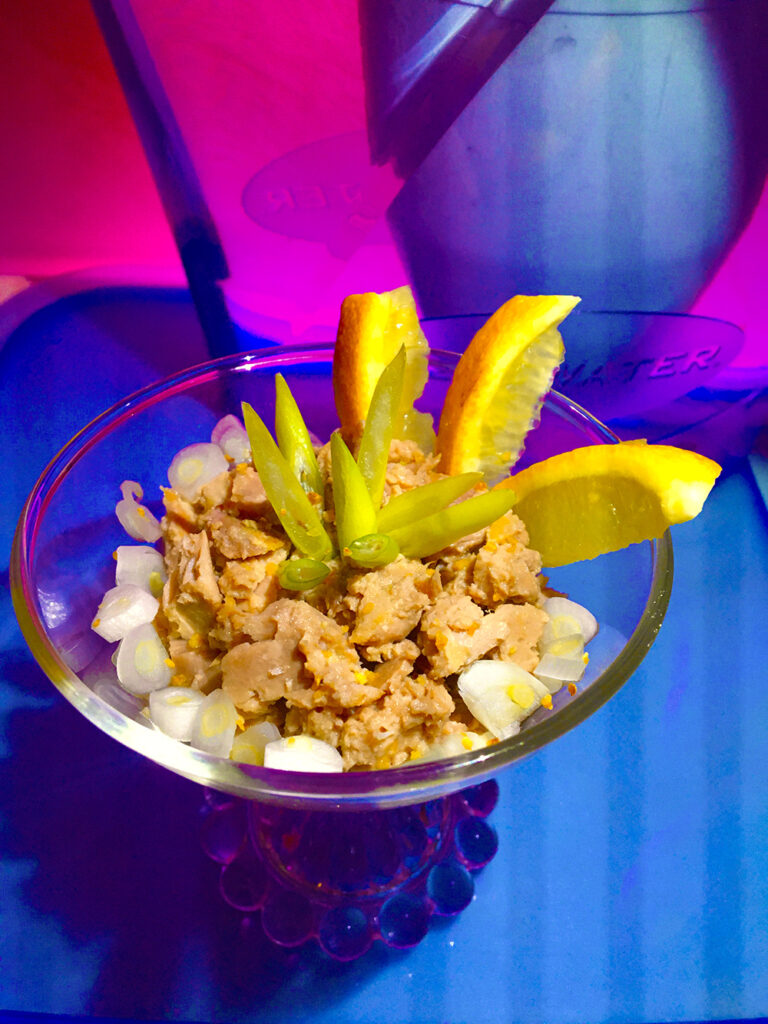After shrimp, canned tuna is the most popular seafood consumed in the U.S. Here’s how to choose the healthiest product for you and the planet.
| By Lisa McComsey |
A trip to the canned-tuna aisle of any supermarket reveals shelves lined with cute characters, notably a mermaid (Chicken of the Sea), a bumblebee (Bumble Bee), and Charlie the Tuna (StarKist). But what lies beneath those adorable labels may not be good for you—or the oceans.

Destructive capture methods—such as purse seining, which kills vulnerable marine life—illegal fishing, and even human-rights abuses plague the seafood industry. And tuna is no exception.
Be label conscious.
- Look for labels that stipulate these sustainable capture methods: “hook and line,” “troll and pole,” or “troll caught.”
- Check for the Marine Stewardship Council‘s blue-and-white logo on the packaging; this means the tuna has been vetted by the MSC as “certified sustainable seafood.”
- Don’t rely on “trusted, time-tested” brands to fit the bill—many don’t come close. The Greenpeace 2017 Tuna Shopping Guide ranks 20 popular brands, exposing the best and worst in responsibly caught canned tuna. At the bottom of the list, for example, are Chicken of the Sea, Bumble Bee, and StarKist.

Then there’s the mercury problem. Is tuna even safe to eat?
As a general rule, the larger the tuna fish, the higher its mercury levels. Canned white comes from albacore tuna and has three times more mercury than canned light varieties, derived from smaller, less contaminated skipjack tuna.
While never my personal preference, light tuna is definitely the safer choice and is now my go-to canned variety. (BTW, I like it! I really like it!)
The Environmental Defense Fund makes the following consumption recommendations:
Canned White / Albacore (0.32 parts per million of mercury):
- Children under 6 – up to one 3-ounce portion per month
- Children 6 to 12 – two 4.5-ounce portions a month
- Adults (including pregnant women) – three 6-ounce (women) / 8-ounce (men) portions per month
Canned Light (0.12 parts per million of mercury):
- Children under 6 – up to one 3-ounce portion per month
- Older children and adults – up to once a week
Tuna sandwiches, tuna casseroles, and tuna mac and cheese—these American classics can now be enjoyed sustainably. Bon appétit!
Let us know your thoughts in the comments section below.
Photos by TK.
